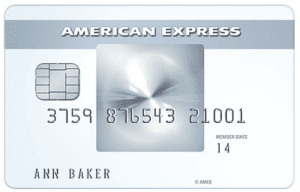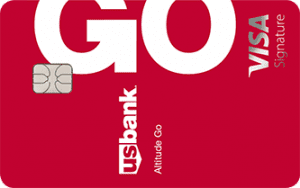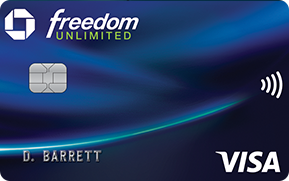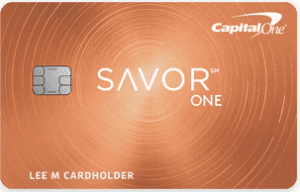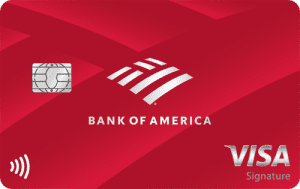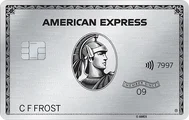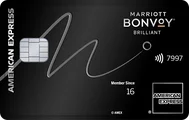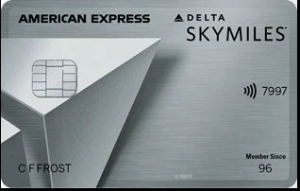Table Of Content
What Is No Annual Fee Card?
Credit cards with no annual fees are the ones that you can use without having to pay fees every year. Those cards attract many customers because they allow them to get and keep their credit cards without paying hefty fees.
No annual fee credit cards are not confined to online or regional banks. Nearly all major US banks offer at least one no-annual-fee credit card.
Overall, credit cards with annual fees often come with better rewards and lower interest rates. That said, cards without annual fees can still provide great benefits. As the table below shows, many no-annual-fee cards offer competitive rewards and even welcome bonuses.
Don't worry – banks know how to make money on those credit cards. It is worth remembering that financial institutions still collect payment processing fees from merchants. In addition to that, once the introductory period expires, customers have to pay interest on any unpaid balances.
Card | Rewards | Bonus | Annual Fee |
| The Amex EveryDay® Credit Card | 1X – 2X
2X points at U.S. supermarkets (up to $6,000 per year, then 1X), 2X points on prepaid rental cars booked through American Express Travel and 1X points on all other purchases
| 10,000 points
10,000 points after spending $2,000 on purchases within the first three months
| $0 |
|---|---|---|---|---|
| U.S. Bank Altitude® Go Visa Signature® | 1X – 4X
4x points at restaurants, take-outs & deliveries, 2x points at supermarkets, gas stations & streaming servicesm and 1 point for 1 dollar on all other purchases
| 20,000 points
Earn 20,000 bonus points after spending $1,000 in the first 90 days of card opening
| $0 |
| Chase Freedom Unlimited® | 1.5% – 5%
5% cash back on travel booked through Chase Ultimate Rewards, 3% on dining (including takeout and eligible delivery), 3% on drugstore purchases, and 1.5% on all other purchases
| $200
Earn a $200 bonus after you spend $500 on purchases in the first 3 months from account opening.
| $0 |
| Capital One SavorOne Cash Reward | 1% – 8%
unlimited 3% cash back on dining, entertainment, popular streaming services, and grocery store purchases (excluding superstores like Walmart® and Target®). You’ll also earn 1% on all other purchases. Plus, you get 10% cash back on purchases through Uber and Uber Eats, 8% on Capital One Entertainment purchases, and 5% on hotels and rental cars booked through Capital One Travel
| Earn $300 in welcome bonuses. Enjoy a $100 credit to use towards flights, stays and rental cars booked through Capital One Travel during your first cardholder year. Plus, earn a $200 cash bonus once you spend $500 on purchases within the first 3 months from account opening
Earn $300 in welcome bonuses. Enjoy a $100 credit to use towards flights, stays and rental cars booked through Capital One Travel during your first cardholder year. Plus, earn a $200 cash bonus once you spend $500 on purchases within the first 3 months from account opening
| $0 |
| Bank of America® Customized Cash Rewards credit card | 1-3%
3% cash back in the category of your choice: gas, online shopping, dining, travel, drug stores, or home improvement/furnishings, 2% cash back at grocery stores and wholesale clubs and 1% cash back on all other purchases. The 3% and 2% cash back available on the first $2,500 in combined choice category/grocery store/wholesale club purchases each quarter (then 1%)
| $200
$200 cash rewards bonus after making at least $1,000 in purchases in the first 90 days of your account opening
| $0 |
No Annual Fee Cards: What Are The Requirements
Usually, banks have no special requirements, specifically designed for no annual fee cards.
According to Citibank, the requirements depend greatly on whether a client applies for secure or unsecured credit cards rather than on annual fees. So here are policies that most banks follow:
- Secured credit cards – Some secured credit cards have no annual fees. In most cases, you can get secured credit cards even with a poor or average credit rating. However, in this case, you usually have to come up with a security deposit of $200 or more to get approved for this type of credit card.
- Unsecured credit cards – Come with more risk for the bank, so the approval requirements tend to be stricter. Typically, banks won’t approve credit cards for those with poor credit scores (like a FICO score of 580 or below). You'll also need to have a steady income and a debt-to-income (DTI) ratio under 45%, though ideally, banks prefer it to be 36% or less. These requirements are generally similar whether the card has an annual fee or not.
How To Build Credit With No Annual Fee Card?
You can build your credit history and improve your credit score with any credit card.
The advantage of no-annual-fee credit cards is that you do not have to pay a hefty annual fee for the privilege. However, rewards credit cards with no annual fee will usually require at least good credit.
Here are some of the ways how you can build your credit:
- Make Payments On Time
This is one of the most important components of a credit score. Poor credit history is one of the common reasons credit card applications get rejected. The payment history makes up 35% of the FICO score.
Consequently, if you keep making monthly payments on your credit card on time, this can help you improve your credit score. But, at the same time, it is worth remembering that missing payments can severely damage your credit.
- Keep Credit Utilization Ratio Under 30%
It is worth remembering that payment history is not the only significant component of credit score. Another major feature is the so-called ‘credit utilization ratio.’ This indicator measures the percentage of utilized credit compared to the total available credit.
For example, if your total limit is $20,000 and you have utilized $3,000, then, in this case, your credit utilization ratio will be 15%. The optimal credit utilization ratio is 30% or lower. If that is the case, this can help you improve your credit score. The credit utilization ratio makes up 30% of the credit score.
- Build A Lengthy Credit History
The length of credit history is another significant component of FICO credit score, making up 15% of it.
So if you keep your credit card for a lengthy period and keep making payments, that can also positively impact your credit score.

What Are The Drawbacks Of No Annual Fee Cards?
Whether or not no annual fee credit cards are worth it for you does depend upon your financial circumstances and goals. It is true that no annual fee credit cards can give you an affordable option to improve your credit score and potentially earn some rewards in the process.
However, just like any other type of financial product, no annual fee credit cards do have some disadvantages as well, here are some of them:
- Smaller Bonuses
One of the important downsides of no annual fee credit cards is the fact that some of them offer no introductory bonuses and those who do offer some rewards are typically smaller than with cards that have annual fees.
For example, if we take a look at Chase bank credit cards, the Chase Freedom Unlimited credit card does offer a Earn a $200 bonus after you spend $500 on purchases in the first 3 months from account opening.. This is helpful, but in contrast to this Chase Sapphire Reserve Credit Card offers Earn 125,000 points after you spend $6,000 in purchases in the first 3 months from account opening (worth about $700).
- No Special Perks
Some credit cards offer luxury perks to their customers, such as access to the thousands of airport lounges across the world, where they can rest and get some free food and drinks as well.
However, in most cases, those benefits are mostly reserved for cards with considerable annual fees. So if access to those perks is important to you, then no annual credit cards might not be that useful in that regard.
- Foreign Transaction Fees
Another downside to using credit cards with no annual fees is that most of them charge a standard 3% foreign transaction fee, for any payments made with the card when used abroad. This might seem like a small fee for one transaction, but it can add up to a significant amount.
For example, if you spend $3,000 during your trip, then you will be charged $90 in foreign transaction fees. Fortunately, there are several credit cards with 0% foreign transaction fees, but in most cases, you have to pay an annual fee.
How To Choose No Annual Fee Card?
If you think that getting a no annual fee card is the right choice for you, there are several factors to consider when deciding which particular card you wish to choose. Here are some of the considerations:
- Rewards/Cashback rates – Some no-annual-fee credit cards allow you to earn a certain percentage of cash back on some or all purchases. Ideally, you want a card with a higher cashback rate on categories where you spend the most.
- Welcome bonuses – The bonuses with no annual fee credit cards might not be as large as some other cards. However, they are still worth considering. For example, there are many no-annual-fee cards you can earn up to a $200 bonus if you spend a specific amount of money on purchases. Besides cashback offers, some no-annual fee credit cards offer clients welcome bonus points, which can be later redeemed for several rewards.
- 0% Introductory rates – Many no-annual fee cards offer a 0% introductory rate for purchases. This period varies depending on the card but usually falls within the 6 to 24-month range. This means that even if you do not pay your balance in full by the end of the statement period, you still do not pay any interest. However, it is worth remembering that you still have to keep making monthly payments. Otherwise, you might lose that benefit and also damage your credit rating.
- Protections – Nowadays, many credit cards offer protections such as zero liability policies on all unauthorized charges. This is helpful because if at some point, fraudsters got access to your account and made unauthorized withdrawals or purchases, you will not be financially liable for those stolen funds.
How To Maximize The Benefits Of No Annual Fee Cards?
There are several ways to maximize the benefits of no-annual-fee credit cards. Here are some of the benefits you can take advantage of:
- Leverage Welcome Bonuses
Most no-annual-fee credit cards offer cash bonuses to new clients if they spend a certain amount of money during a specific period after opening the bank account.
So all you have to do is to spend the required amount on your needs, and the bank will give you a statement credit, an equivalent of that welcome bonus. The main principle is the same with points-based bonuses.
- Spend on Higher Cashback Categories
Many no-annual-fee credit cards offer a higher percentage of cash back on some categories or all of your spending.
Therefore, if you want to maximize the benefits you receive from a credit card, then it is important to use your no-annual-fee credit card when spending money on categories where you get the highest cashback value.
- Use 0% APR Period
Many no-annual-fee credit cards come with a 0% APR introductory offer, typically ranging from 6 to 24 months. So if you transfer your balances to that type of card, you can save some money on interest payments.
In addition, it will be helpful if you pay off your balance before the introductory period expires since you have to pay the standard interest rate on your remaining balances.
However, it is important to keep in mind that with most credit cards, you have to pay up to a 3% fee for transferring balances.
Which No Annual Fee Credit Card Is Best?
There are several no annual fee credit cards that have a number of useful benefits. Here are some of those:
Chase Freedom Flex
The Chase Freedom Flex offers a higher cashback on specific categories and has no annual fee. Cardholders can earn .
Also, it offers welcome bonus includes a . Additionally, there is 0% for 15 months on purchases and balance transfers.
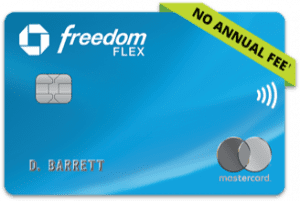

Bank of America Travel Rewards
The Bank of America Travel Rewards card has no annual fee, and it offers some decent reward for travelers. Customers can earn 1.5 points for every $1 you spend on all purchases everywhere, every time and no expiration on points.
In addition, it offers 25,000 online bonus points after you make at least $1,000 in purchases in the first 90 days of account opening – which can be redeemed for a $250 statement credit toward travel purchases. You can redeem your bonus as a statement credit towards travel or dining purchases.
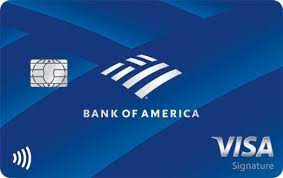

Citi Rewards+® Card
The Citi Rewards+® Card offers Earn 5X points on rental car, hotel and attraction purchases booked through cititravel.com (ends 12/31/2025), 2X points at supermarkets and gas stations (on up to $6,000 in purchases per year, then 1X points) with 1X points on all other purchases.
Its sign up bonus include Earn 20,000 bonus points after spending $1,500 within the first 3 months of account opening (redeemable for $200 in gift cards or travel rewards at thankyou.com).
There is also 0% APR for 15 months on purchases and balance transfers. After that, the variable APR will be 17.74% – 27.74% (Variable), based on your creditworthiness.


FAQs
There are still some potential costs no annual fee credit cards might have. For example, in most cases, you have to pay a balance transfer fee, ranging from 3% to 5%, depending on the card in question.
There are also cash advance fees, as well as the standard 3% foreign transaction fee, which you have to pay when you use your card abroad.
There are several ways how credit card companies might benefit from no-annual fee cards. Firstly, they still earn some fees from balance transfers, cash advances, and foreign transactions.
In addition to that, credit card companies can earn income from interest rates, paid by clients on their balances, after the introductory 0% APR period expires, if this is offered.
Finally, it is also helpful to remember that credit card companies also earn some payment processing fees from merchants as well.
There are some credit cards called “platinum” with no annual fees, but most of them don't offer rewards. For example, Platinum MasterCard from Capital One has no annual fees or foreign transaction fees.
The annual fee is the amount charged by banks and other financial institutions to their clients for use of their credit cards.
This annual charge is added to the bank statement as a debit once per year, as long as the credit card account is open.
Having no annual fee does not mean that there will be no interest charged on the credit card balance. This just means that client does not have to pay an annual fee to the bank for the use of the credit card.
On the other hand, some no annual fee credit cards do have 0% APR introductory offers, as discussed above.
There are a number of no annual fee credit cards which you might get even with a bad credit rating. One example of this is the Bank of America Customized Cash Rewards Secured Credit Card.
However, one thing to keep in mind with this card is that you have to come up with a security deposit of $200 or more to be approved.
You do not have to necessarily pay an annual fee on a credit card. As discussed above, there are many credit cards, which do not require for you to pay any annual fees.
So if you want to avoid paying this type of fee, most major banks do have a number of options available to their customers.
In most cases, banks and credit card companies are unlikely to start charging a fee for those cards which were advertised as no annual fee cards.
However, credit cards do have an expiry date and financial institutions do have the option to withdraw the no annual fee card from the market and stop issuing such cards.
Top Offers
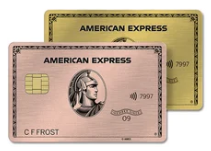

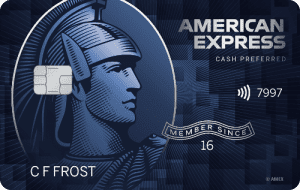
Top Offers From Our Partners
Top Offers




